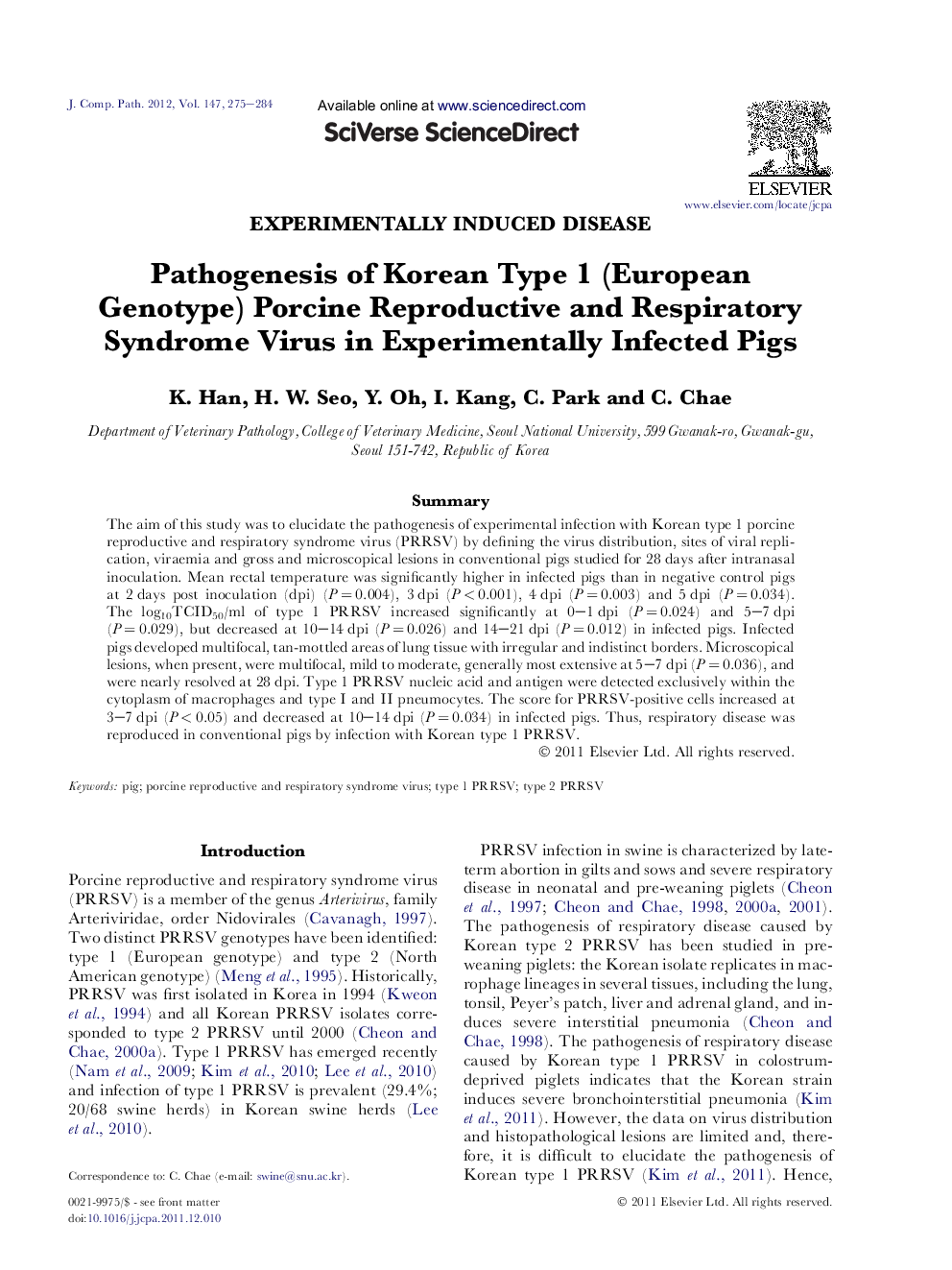| Article ID | Journal | Published Year | Pages | File Type |
|---|---|---|---|---|
| 8500810 | Journal of Comparative Pathology | 2012 | 10 Pages |
Abstract
The aim of this study was to elucidate the pathogenesis of experimental infection with Korean type 1 porcine reproductive and respiratory syndrome virus (PRRSV) by defining the virus distribution, sites of viral replication, viraemia and gross and microscopical lesions in conventional pigs studied for 28 days after intranasal inoculation. Mean rectal temperature was significantly higher in infected pigs than in negative control pigs at 2 days post inoculation (dpi) (P = 0.004), 3 dpi (P < 0.001), 4 dpi (P = 0.003) and 5 dpi (P = 0.034). The log10TCID50/ml of type 1 PRRSV increased significantly at 0-1 dpi (P = 0.024) and 5-7 dpi (P = 0.029), but decreased at 10-14 dpi (P = 0.026) and 14-21 dpi (P = 0.012) in infected pigs. Infected pigs developed multifocal, tan-mottled areas of lung tissue with irregular and indistinct borders. Microscopical lesions, when present, were multifocal, mild to moderate, generally most extensive at 5-7 dpi (P = 0.036), and were nearly resolved at 28 dpi. Type 1 PRRSV nucleic acid and antigen were detected exclusively within the cytoplasm of macrophages and type I and II pneumocytes. The score for PRRSV-positive cells increased at 3-7 dpi (P < 0.05) and decreased at 10-14 dpi (P = 0.034) in infected pigs. Thus, respiratory disease was reproduced in conventional pigs by infection with Korean type 1 PRRSV.
Related Topics
Life Sciences
Agricultural and Biological Sciences
Animal Science and Zoology
Authors
K. Han, H.W. Seo, Y. Oh, I. Kang, C. Park, C. Chae,
